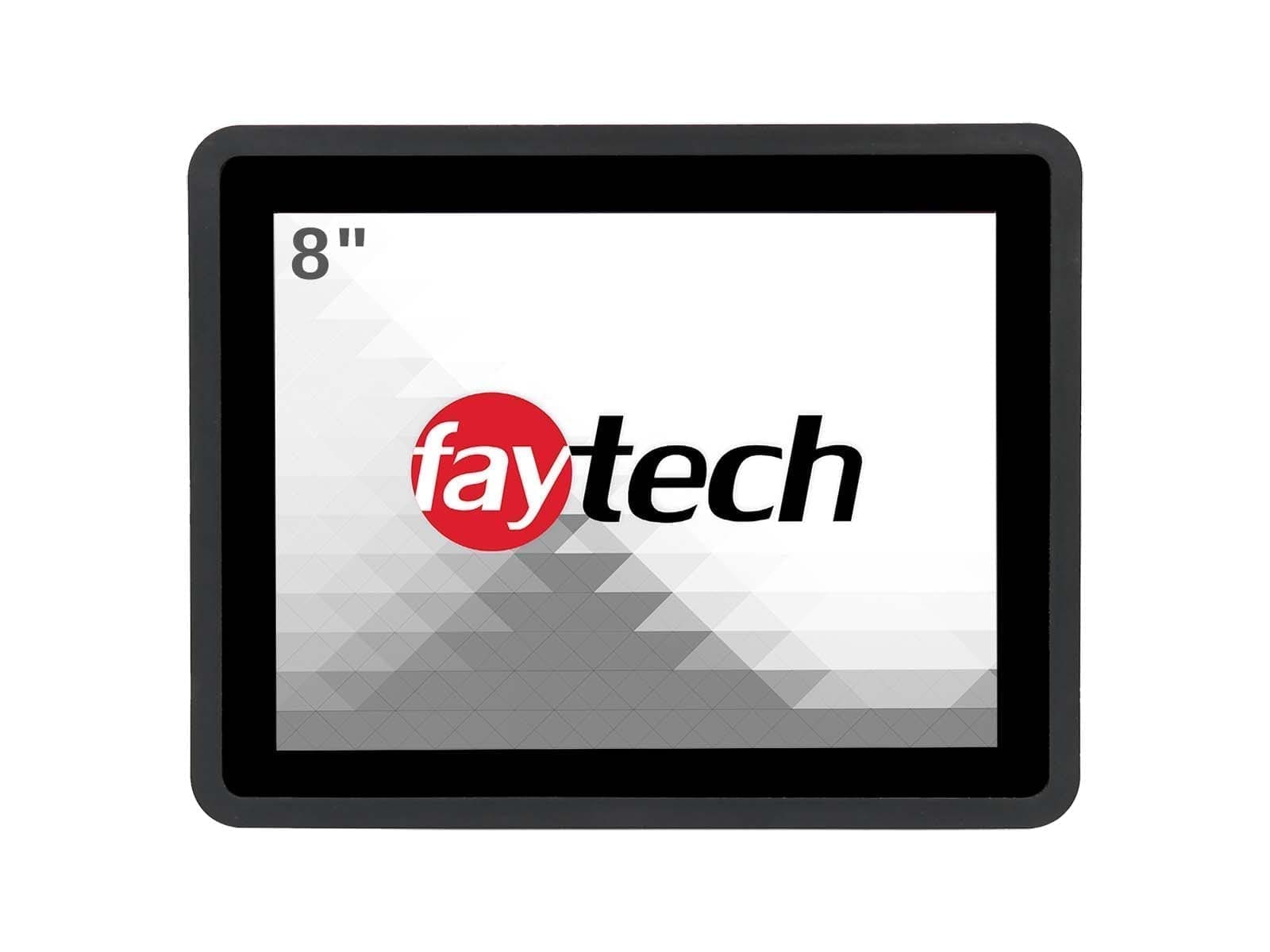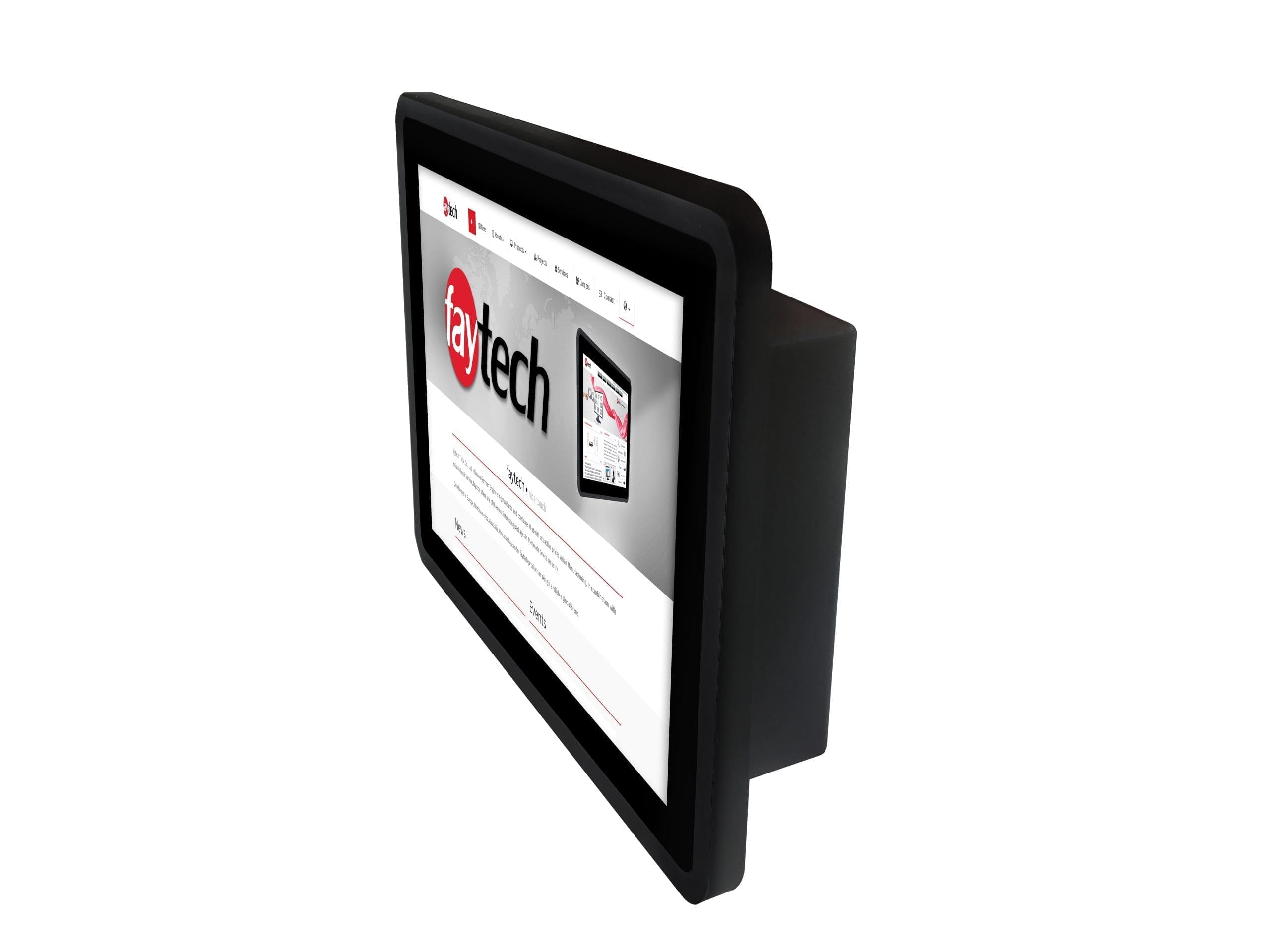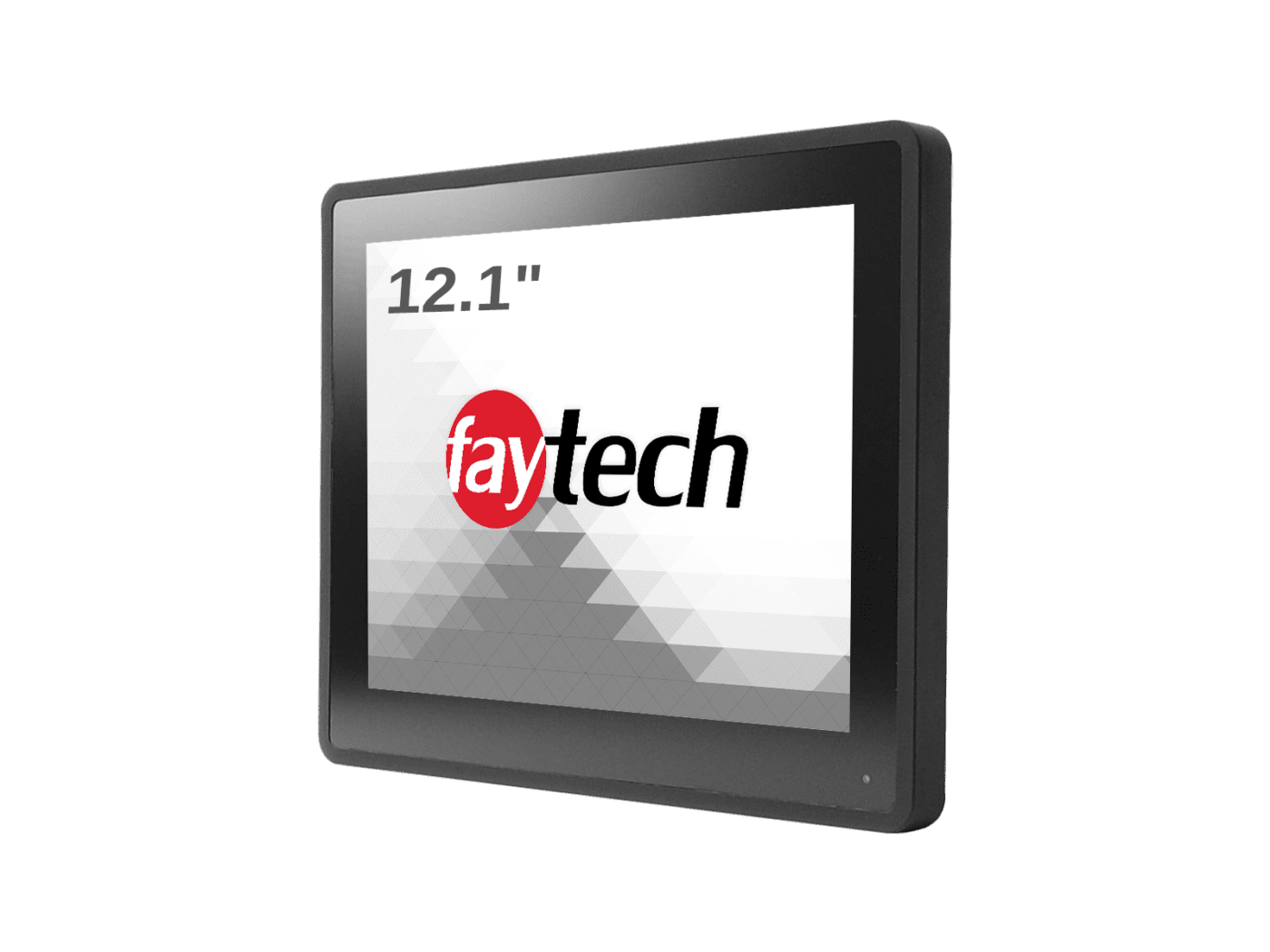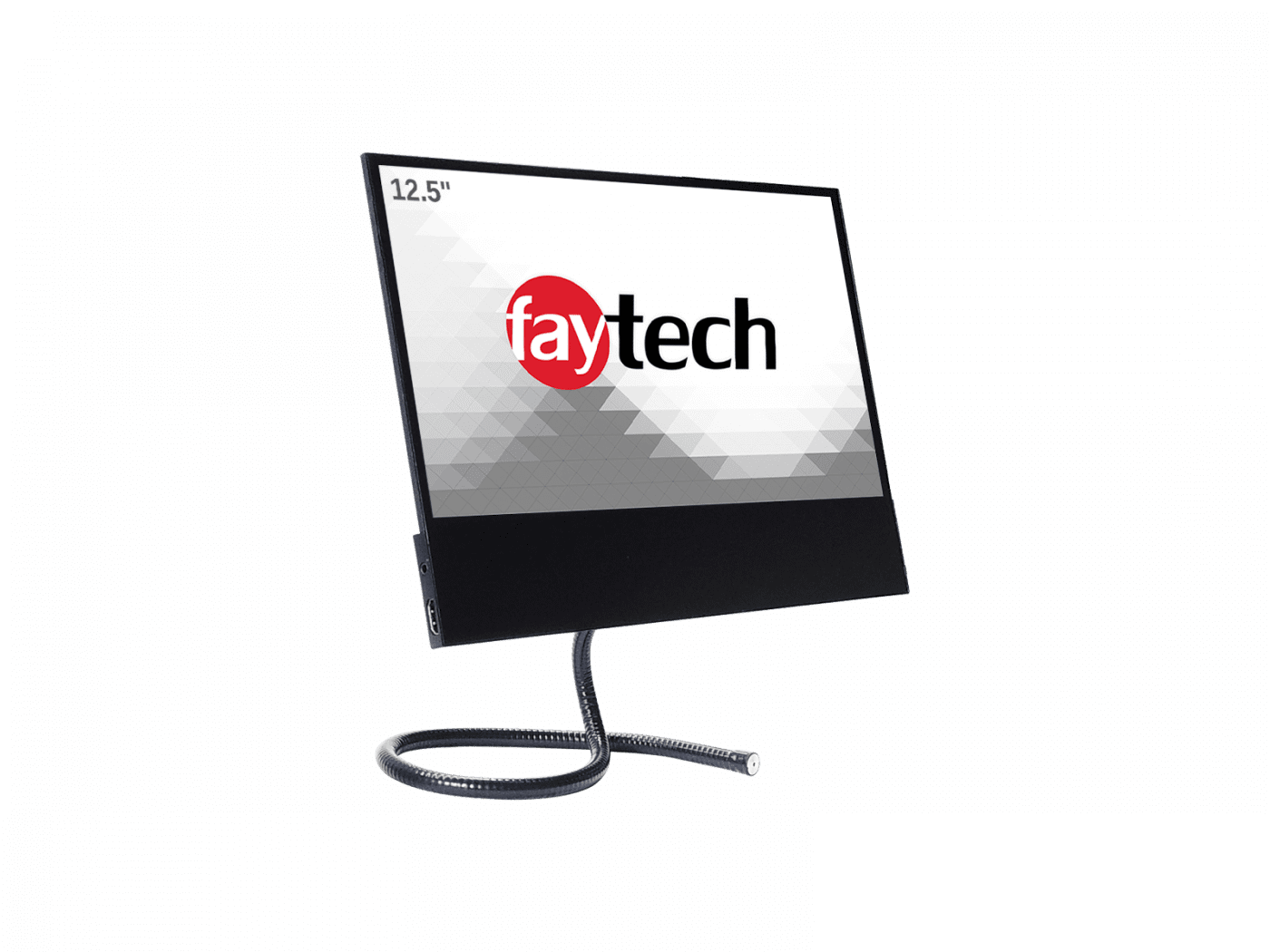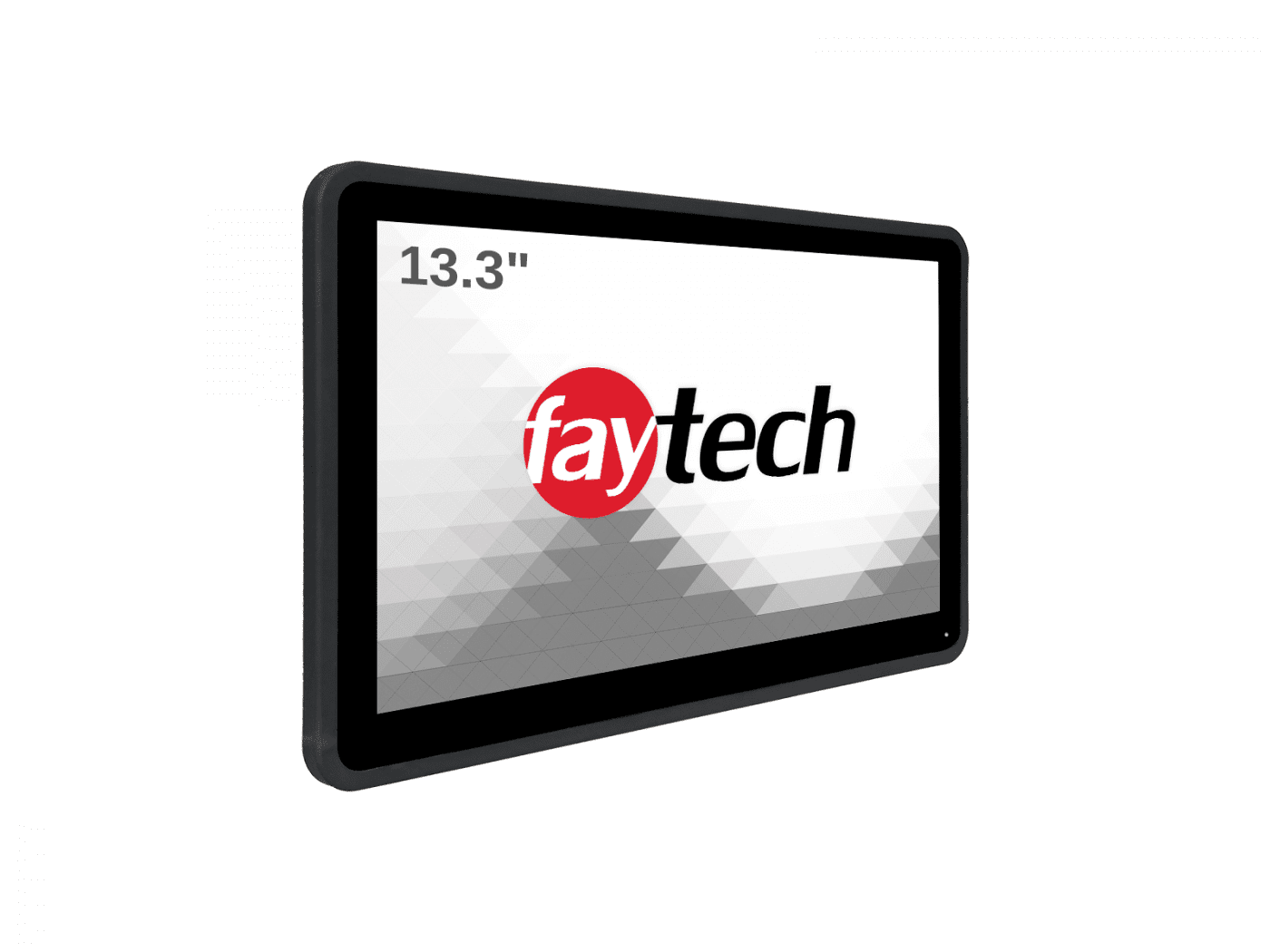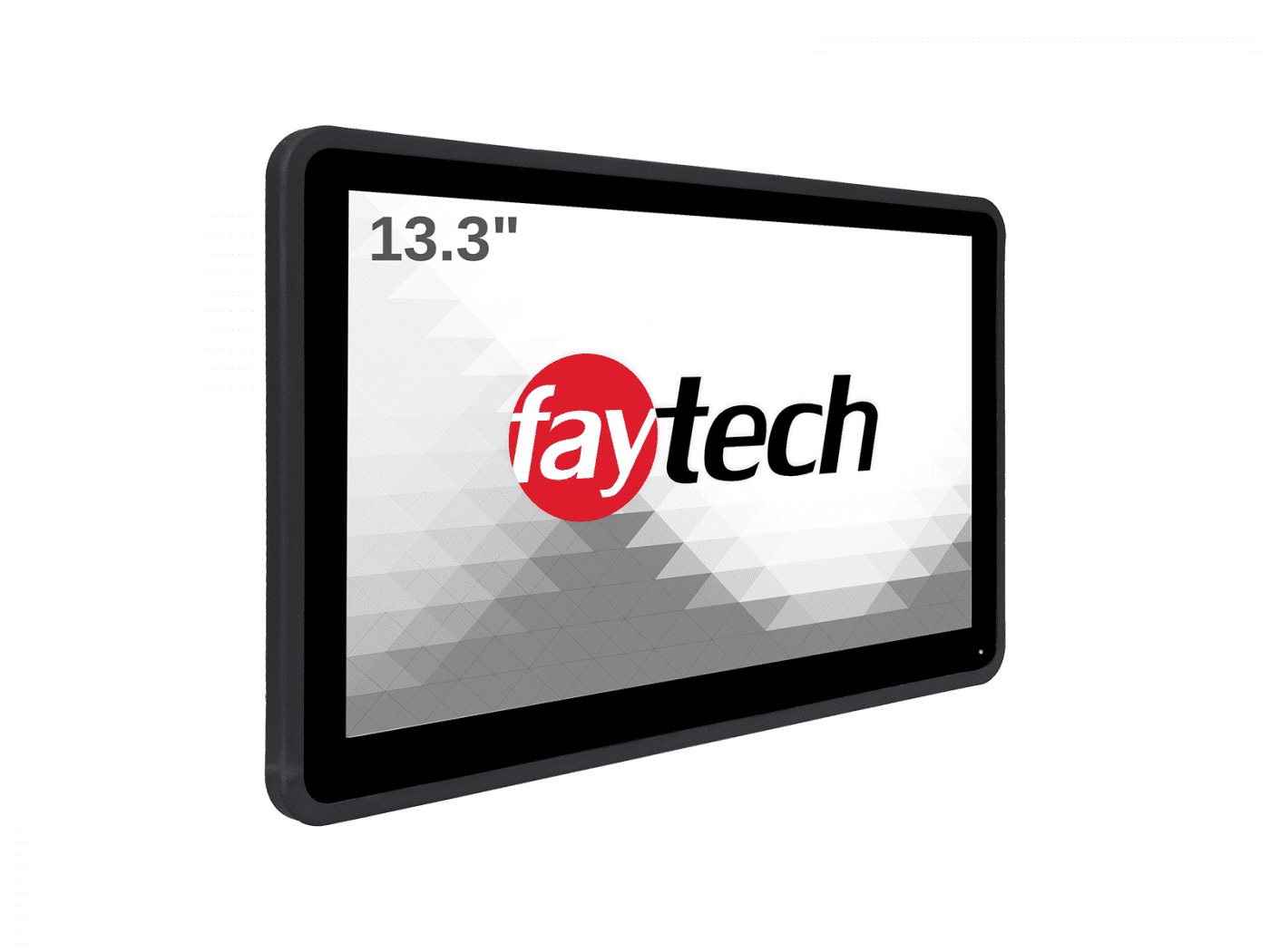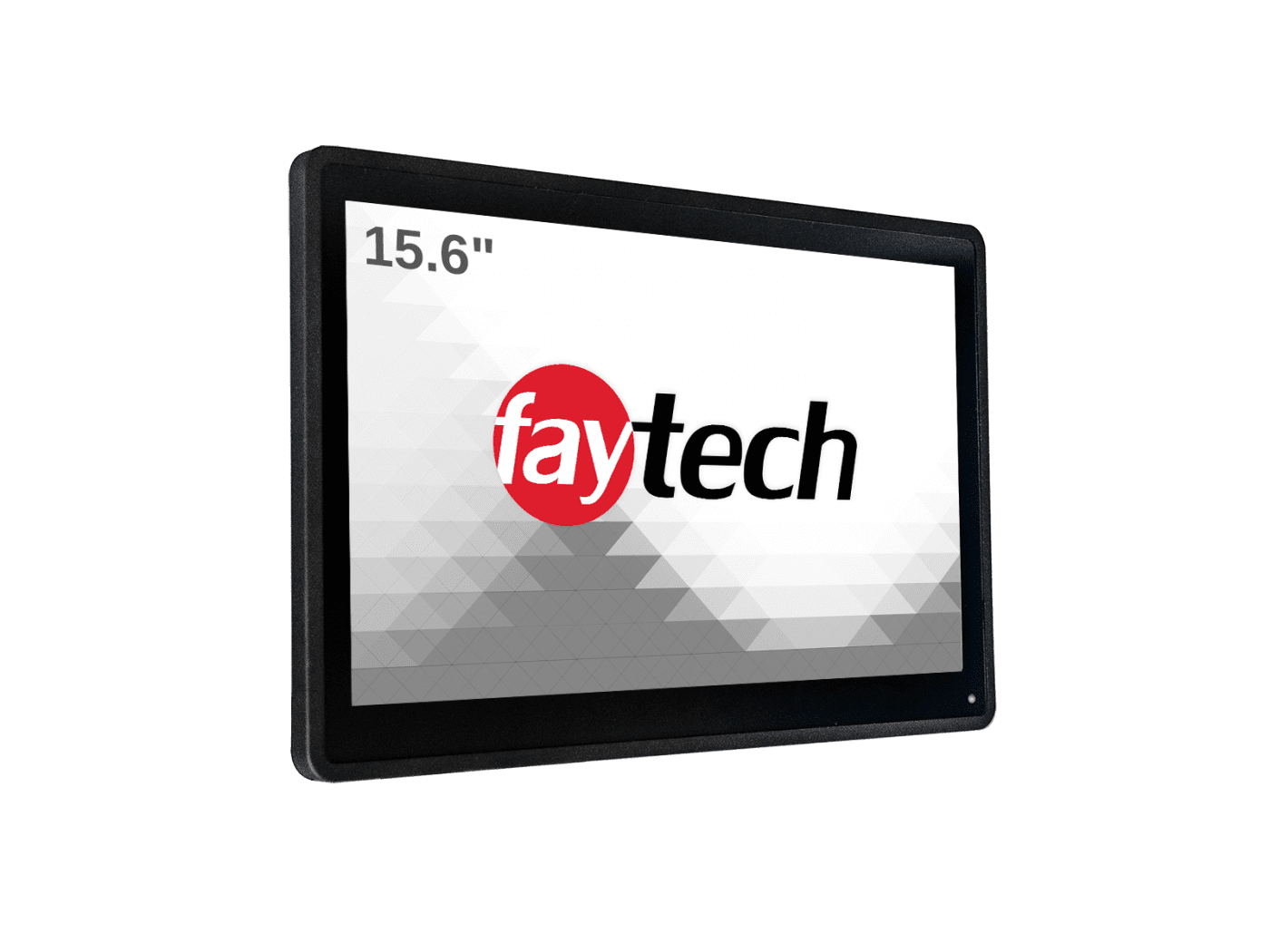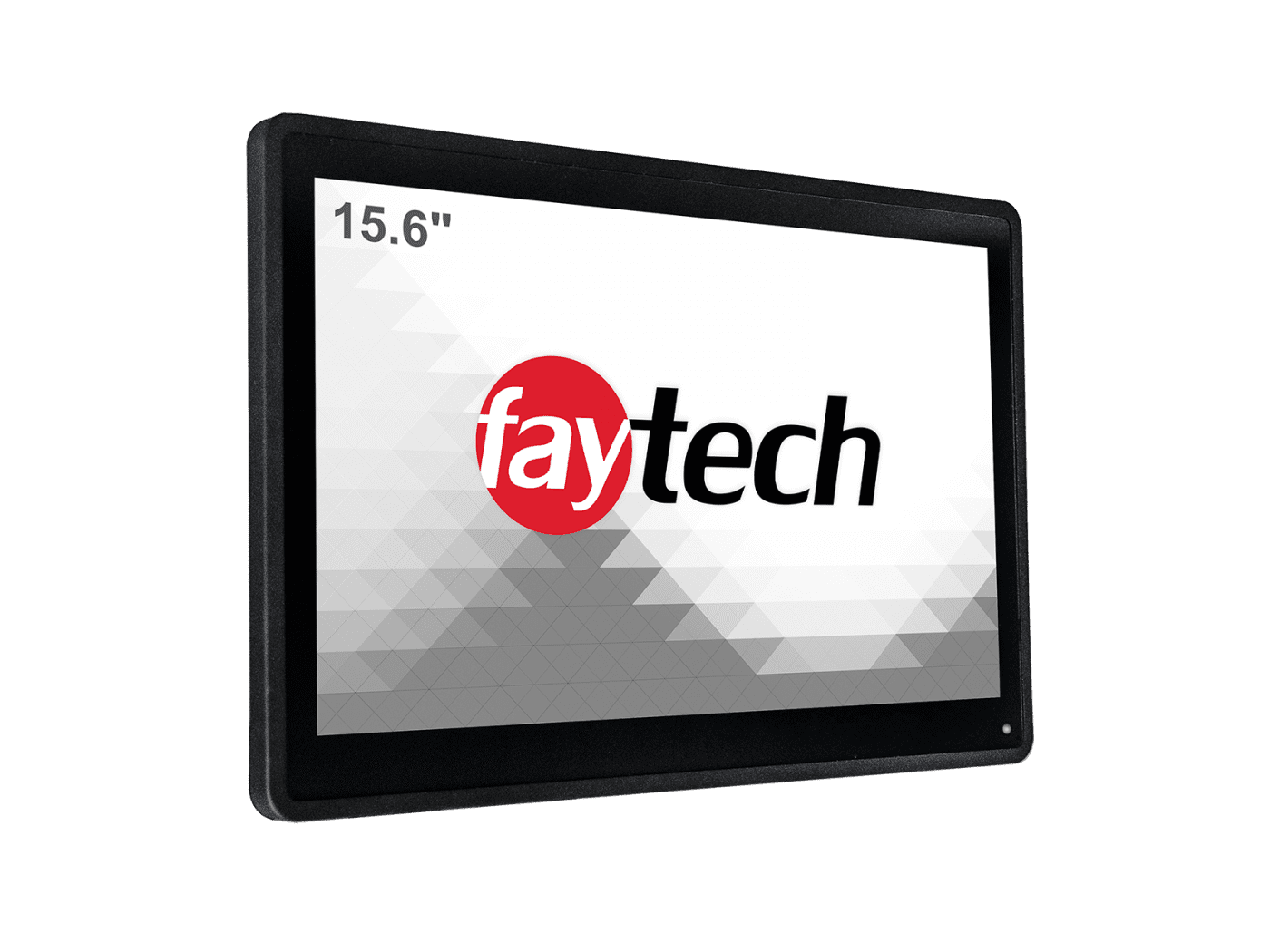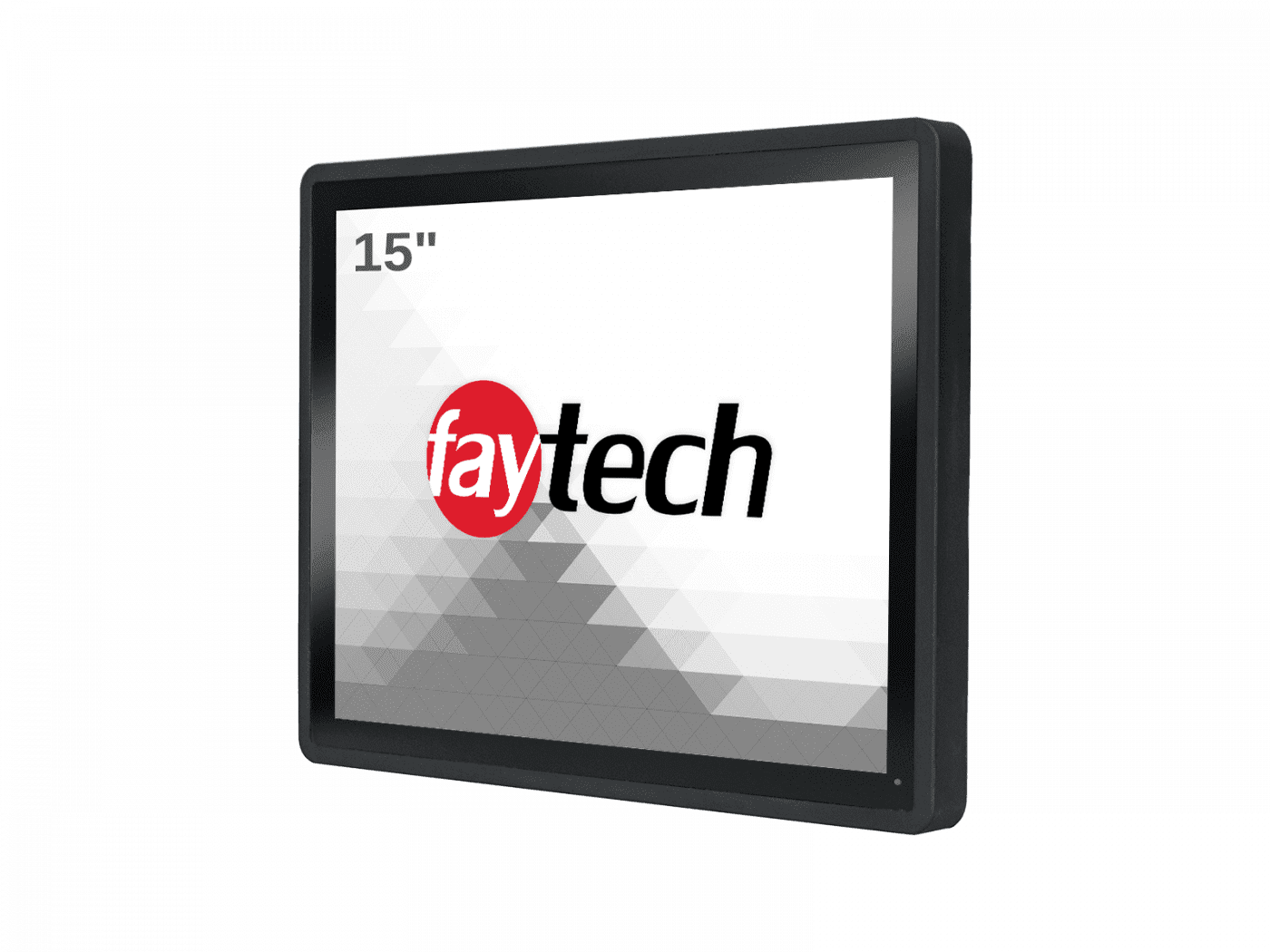faytech Clearance Touch Screen Products
Explore Our Clearance Touchscreen Display Solutions
On this Clearance Page, we are excited to highlight an exceptional opportunity for customers to acquire faytech’s touch screen monitors at a significant discount. The reduced prices apply to discontinued models, offering you an excellent chance to own industry-leading technology without stretching your budget.
| Name | Image | SKU | Price |
|---|---|---|---|
| 8″ Capacitive Touch PC (N4200) | FT08N4200CAPOB | Original price was: $956.74.$717.56Current price is: $717.56. | |
| 8" Embedded Touch PC (ARM V40) | FT08V40CAPOB | Original price was: $464.25.$348.19Current price is: $348.19. | |
| 12.1″ Capacitive Touch PC (N4200) | FT121N4200CAPOB | Original price was: $2,366.78.$1,775.09Current price is: $1,775.09. | |
| 12.5" faytech Flat Touch Monitor v1 | FT125FLAT | ||
| 12.5" faytech Flat Touch Monitor v2 | FT125FLATV2 | ||
| 13.3″ Capacitive Touch PC (N4200) | FT133N4200CAPOB | Original price was: $1,183.71.$887.78Current price is: $887.78. | |
| 13.3″ Embedded Touch PC (ARM V40) | FT133V40CAPOB | Original price was: $639.03.$479.27Current price is: $479.27. | |
| 15.6″ Capacitive Touch PC (N4200) | FT156N4200CAPOB | Original price was: $1,338.04.$1,003.53Current price is: $1,003.53. | |
| 15.6″ Embedded Touch PC (ARM V40) | FT156V40CAPOB | Original price was: $762.57.$571.93Current price is: $571.93. | |
| 15″ Capacitive Touch PC (N4200) | FT15N4200CAPOB | Original price was: $2,356.94.$1,767.71Current price is: $1,767.71. | |
| 17″ Embedded Touch PC (ARM V40) | FT17V40CAPOB | Original price was: $757.82.$568.37Current price is: $568.37. |
Selecting the right touch screen monitors can be a complex endeavor for businesses. Various applications across industries require distinct technologies and functionalities; what proves invaluable in one setting could be disadvantageous in another. Amidst a plethora of suppliers who provide potential solutions but fall short in delivering the information needed for informed decision-making, faytech stands out.
faytech offers an exhaustive catalogue of touch screen monitors, ranging in size from 7” to 55”, designed to meet the specific needs of diverse applications. Each product is meticulously detailed to provide you with the insights necessary to make an informed choice that is apt for your requirements.
Our dedicated sales team is consistently available to field any questions you may have about touch monitor solutions. They are well-equipped to guide you through the selection process, ensuring that your investment yields the highest value.
Take advantage of our clearance sale to access premium faytech products at discounted prices. Don’t miss this opportunity to invest in top-tier technology for less.
More Information
Huge Savings on Clearance Touch Screen Devices for Commercial & Industrial Use
faytech offers touch screen monitors that are designed for industrial use. These monitors have touch panels that are optically bonded and can withstand extreme temperatures ranging from -20°C to 70°C. They come with standard display input ports, a USB touch output port, and a DC power cable. The LCD displays of faytech touchscreen monitors are equipped with LED backlight units.
Our Clearance Touch Screens for Industrial and Commercial Applications
Technical specifications and drawings are available to download for all of our standard touchscreen monitor modules. Our touch screen monitor lineup is divided into three major categories:
-
Our Capacitive Touch Monitors, Open Frame Touch Monitors line features options from 7” to 55” with apertures for standard mounting brackets. These touch screen products are great for indoor use in businesses and industries. They work well for things like cash registers, advertising and signs, office work, and controlling machines in factories.
-
The Resistive Touch Monitor series ranges from 7” to 22” and are stand-up touchscreen monitor solutions. These touch screen monitors are great for various business and industrial uses. They can be used as an alternative to PCAP for things like point of sale systems, control panels in factories, input interfaces for kiosks, and machine interfaces. They are also suitable for many other commercial and industrial applications.
-
Faytech’s High Brightness Touch Monitors, Sunlight Readable Touch Monitors range from 8” to 55” and are specially designed for the most rugged outdoor environments. These touch screen products are designed with IP65 sealing, sturdy metal framing, and LCDs that have a brightness of 1,000cd/m2. They also come with PCAP touch panels. These monitors are perfect for various outdoor and semi-outdoor uses, such as outdoor advertising and information systems, restaurant menus, and outdoor industrial control systems.
-
Faytech understands that customers often require more than just a touchscreen monitor. We also offer a full lineup of touch PCs which include all the best features of our industrial touch screen monitors, rugged touch monitors, portable touchscreen monitor along with integrated industrial computers with installed choice of OS. Just add software. If you’re looking to build a kiosk, we offer those as complete units too with a touch screen monitor.
-
Sometimes, our wide range of touch monitor products may not meet your specific needs. If you require a customized touchscreen display, a different shape or size, or something larger than what we typically offer, we might still be able to assist you.
Please let us know your custom product needs and we’ll be happy to contact you.
More businesses are using clearance touch screen systems
Commercial and industrial businesses are increasingly adopting touch screen monitors for both customers and employees due to several reasons. Touch screen monitors are not just a passing trend to replace desktop computers; they are revolutionizing the way people interact with devices.
One of the most evident advantages of touch screen monitors is their user-friendliness, making them easy to operate and providing an excellent user experience. Moreover, these monitors are highly versatile, serving various purposes like customer check-in, product ordering, and employee time tracking.
Durable touchscreen monitors cost less.
Touchscreen monitors are gaining popularity in commercial and industrial settings for several reasons. One of the main advantages is their durability, as they can withstand a lot of wear and tear. This makes them ideal for businesses that experience high traffic areas. Moreover, these monitors are also easy to clean, which is crucial for maintaining a clean and sanitary environment in businesses.
Overall, the rising popularity of touch screen monitors in commercial and industrial settings can be attributed to their user-friendly nature, versatility, and durability. If you’re considering adding touch screen monitors to your organization, reach out to us today for more information on the available options. We can quickly bring you up to speed and assist you in making the best choice based on your specific needs.
The benefits of using touch screen monitors
Using touch screen monitors has many advantages for both customers and employees. One major benefit is their user-friendliness and ease of use. Touch screen monitors with excellent image quality are especially useful in businesses where customers need to navigate menus or options quickly and effortlessly. These interactive displays also help employees and customers process information and complete tasks efficiently.
Additionally, touch screen monitors are highly durable and can withstand a lot of wear and tear, making them perfect for retail, governmental, or commercial settings with frequent use or high traffic. Lastly, touch screen monitors offer great flexibility and can be utilized in various ways, such as for point-of-sale systems, self-service kiosks, or even as digital signage with exceptional image quality.
faytech Commercial Grade Touch Screen Displays On Sale
Touch screen monitors are gaining popularity in commercial and industrial businesses, benefiting both customers and employees. The increasing trend of touch screen devices can be attributed to several reasons. Touchscreen monitors are interactive and engaging, making them ideal for businesses looking to encourage customer interaction.
Additionally, they are easy to use, streamlining employee workflow. Moreover, touch screen displays are durable and can withstand heavy use, making them suitable for businesses with high traffic areas. One of the main advantages of touch screen monitors is their ease of use. They do not require any special training or knowledge to operate, making them accessible to all users. Furthermore, they are highly efficient, allowing for quick and accurate transaction processing. The interactive and user-friendly nature of touch screen monitors also enhances the overall user experience.
Another reason for the growing popularity of touch screen monitors is their versatility. Various organizations are adopting these monitors for both customers and employees due to their multi-functionality and user-friendly interface. By utilizing touch screen monitors, businesses can save time and money. These monitors can be used for different purposes such as customer service, order taking, and inventory management.
Additionally, their high-definition resolution and reduced eye strain contribute to their ease of use. In summary, touch screen monitors are becoming increasingly popular in the business world due to their numerous advantages over traditional monitors. They offer a great user experience, are easy to use, and provide versatility for businesses.
What is the Future of Touchscreen Monitor Products in the New Era of Meta and Virtual Reality Developments?
There’s no doubt that touchscreen monitor developments have come a long way in recent years. We’ve seen touchscreen monitor technology become thinner, lighter and more responsive, and now a touch screen monitor is an integral part of many people’s lives.
But what does the future hold for touchscreen applications?
The future of touchscreen monitor technology is becoming very exciting due to recent advancements in Meta and virtual reality. With Meta, users will have a completely new way to interact with their computer and touch screen monitor. Additionally, virtual reality will provide an immersive work experience like never before. This means that we can anticipate some thrilling developments in touchscreen monitors in the years to come. To stay updated on the latest advancements in touchscreen monitor devices, it is recommended to follow faytech North America.
The Evolution of Touchscreen Science
The touchscreen monitor is a type of display device that allows a user to interact with a computer by touching the screen.
Touchscreen monitor technology has evolved over the years, and the future of touchscreen monitor projects is likely to be even more advanced as image quality technology continues to improve.
Perhaps, touchscreen monitor technology will merge with virtual reality and our platforms will adapt to embrace such developments.
The First Touchscreen Devices
Touchscreen monitor technology has been around for decades, but it has only recently become widely used in consumer electronics. Now it is fairly common to see a touch screen monitor with a stylus pen, HD webcam for video conferencing, and convenient software for multi tasking.
The first multi touch screen devices were developed for use in industrial and military applications. These early touchscreens were bulky and expensive, and they were not well suited for use in consumer products.
The Modern Touchscreen Device
Touchscreen monitor technology has come a long way in recent years, and the future looks even brighter. With the development of Meta and virtual reality, the potential for touchscreen monitors is even greater.
With these new touch screen monitor technologies, users will be able to interact with a touch screen monitor in ways that were not possible before. This will open up new possibilities for how we use touchscreen monitors in the future.
The Future of Touchscreen Capabilities for Business and Industry
As touchscreen monitor products become more and more commonplace, it’s only natural to wonder what the future of touchscreen technology holds.
With the recent developments in meta and virtual reality, it’s difficult to say for sure. However, it’s safe to say that touchscreen technology will only become more advanced and widespread in the years to come.
Touch Technologies that will revolutionize your industry
faytech offers 2 major touch screen monitor technologies in its standard touch monitor catalogue – Projected capacitive (PCAP) touch and Resistive touch.
Projected Capacitive
In the 1980s, a touch technology called (PCAP) was invented. Although devices with projected capacitive touch screen monitors began to emerge in the late 1990s, they didn’t gain much popularity at that time. However, everything changed in 2007 when the iPhone was introduced, making PCAP technology widely known and used.
Since then, PCAP has become the dominant touch technology, accounting for over 97% of all touch panels worldwide. This widespread adoption has also led to a decrease in the cost of PCAP technology, making it comparable to 4-wire resistive touch and more affordable than other forms of resistive touch.
Nowadays, PCAP is the preferred choice for touch screen devices across various industries, including consumer electronics, such as phones, laptops, and tablets, as well as applications in casinos, automobiles, retail kiosks, and even non-consumer industrial settings. Its popularity stems from its durability and superior optical clarity, thanks to the strength of its front glass surface.
Recent advances in PCAP technology are allowing it to continue to gain market share in several of the areas still occupied by resistive technology.
-
PCAP touch screens are capable of functioning even with heavy cloth or leather gloves. The latest versions of these touch panels have the ability to detect liquid spills, sprays, or heavy rain without mistakenly activating. Additionally, they can also detect the palm of a hand on the screen without any false activations. PCAP touch screens consist of a grid of transparent capacitors spaced 5-12mm apart on the touch surface. These touch panels work by detecting changes in the electric field at each capacitor node when a conductive object touches the front surface. The touch controller receives capacitance reports from each node every few milliseconds, and if any node exceeds a programmed threshold, a touch is registered. Unlike resistive touch screens, PCAP touch screens do not require force or motion to function. This allows for the use of strong glass or plastic materials as the front surface, making them highly durable. PCAP touch devices are known for their ruggedness and do not have the same risk of overuse failure as 4-wire resistive touch screens. The popularity of PCAP touch screens can be attributed, in part, to their multi-touch and gesture controls, such as dragging, flicking, and pinching, which enhance interactivity in various applications. Since PCAP touch screens only respond to conductive materials like fingers or capacitive styluses, they may encounter issues with liquid spills or heavy gloved fingers not triggering a touch. However, the latest industrial PCAP devices have largely addressed these problems and have been specifically designed and tested for heavy rain and thick glove environments.
Most Common Applications for PCAP technology:
Most cell phones, tablets, and laptops use PCAP touch technology, which allows for precise multi-touch controls without needing to apply pressure on the screen. This technology also provides a smooth surface and clean look with a front glass. When it comes to gaming, touch screens using PCAP are preferred by players at casinos because it offers a familiar experience similar to other devices they own.
The thick front glass protects the screen from spills and accidental touches from drink glasses. In advertising, public-facing touch screens should be easily accessible to the public. PCAP touch screens are commonly used in smartphones, so using them in public touch screens provides a consistent user experience. The thick glass surface also adds protection to the underlying display. Resistive touch screens are not ideal for outdoor use due to the air gap they require, which affects visibility in high ambient light environments.
Optically bonded PCAP units, on the other hand, preserve display contrast in outdoor situations, making them visible even with lower brightness and power consumption. In the automotive industry, the center information display has become a key selling point. Drivers expect the same user experience they have on their phones and tablets, so PCAP technology is used to provide familiarity, optical superiority, and reliability. Automotive designers also require display systems that meet safety, visibility, and reliability standards, similar to rugged industrial uses.
Resistive touch technology origins
Resistive touch technology, which was invented in 1970, gained popularity in the 1980s and 90s. It was commonly used in devices such as credit card readers, office printers, and PDAs. Although it now only accounts for around 2% of the touch panel market, there are still situations where resistive touch screens are the best choice. Resistive touch screens work by having two ITO layers separated by air and spacers. When these layers come into contact due to external force, a circuit is completed, and the touch location is detected. The advantage of this technology is that it can be operated by almost any object, including gloved hands, credit cards, and pens. Resistive touch screens are particularly useful in scenarios where spills or dirt are expected on the screen. As long as the weight is not enough to push the film against the underlying glass, the touch functionality will remain unaffected. Additionally, the need for a certain amount of force to register a touch makes it less likely for accidental touches to occur. However, compared to other technologies, resistive touch screens are not as optically clear. This is because the two layers are separated by air, which increases reflectivity. Lower-cost 4-wire resistive touch screens are prone to failure after approximately 200,000 touches, but more durable 5-wire versions are available (faytech offers both options). Typically, the top layer of a resistive touch panel is a thin PET film with ITO rear coating. This limits the ruggedness of these screens, although some smaller units can be made with a thin glass front surface. While resistive touch screens perform well with single-point touch, they are not as effective in applications that require multi-point and gesture touch controls.
Most common applications for resistive touch technology:
Retail employees prefer using non-conductive objects like pens, credit cards, or long fingernails to tap on the buttons of POS systems. These objects work well with resistive touch screens, unlike capacitive touch screens. In addition, resistive touch panels are commonly used in card readers for accepting customer signatures. Resistive touch panels are also popular in cockpit avionics because they do not rely on an electric field outside the touch panel surface. This is important in certified aircraft where electromagnetic noise must be tightly controlled. Moreover, resistive screens require a small amount of force to register a touch, reducing the likelihood of pilot errors during turbulent flights. When operators need to wear thick gloves, resistive touch technology is still widely used. While capacitive technology has improved in allowing heavy glove touch, resistive touch provides the assurance that all touches with gloves will be registered.
Optical Bonding Technology
faytech considers direct bonding to be a standard feature, unlike other suppliers who see it as an upgrade. We strongly believe in the advantages of direct bonding and include it in all our touch products. faytech’s optically bonded products enhance the image contrast on the screen, giving it a professional and sharp appearance. This is particularly beneficial in outdoor and semi-outdoor settings. Compared to touch displays with cheap air-gap construction, optically bonded touch displays are brighter. Optically bonded displays offer superior impact resistance, making them essential for any public-facing display unit. faytech’s optically bonded displays feature a layer of clear silicone gel between the touch panel and LCD front glass. This layer effectively prevents dirt, dust, and moisture from accumulating behind the glass, ensuring visibility even in harsh environments. Initially used in point-of-sale terminals, kiosk systems, ATMs, and PDAs, touch screen monitors are now in high demand due to the increasing popularity of smartphones, tablets, GPS systems, and gaming consoles that utilize Android and iOS operating systems.
The evolution of interactive touch displays for commercial applications
In the past, touchscreens could only detect one point of input and only a few were able to measure pressure. However, Apple revolutionized this technology with their introduction of multi-touch on devices like the iPhone and iPod touch. With multi-touch, users can interact with the screen using their fingers instead of a stylus. The movement of the fingers creates gestures, which are then communicated to the software. The popularity of the iPhone led to the adoption of touch technology in many smartphones and handheld devices, eventually leading to the development of all-in-one computer systems.
Many companies are looking to buy clearance touch monitors
Faytech North America, as a touch screen manufacturer has realized that many companies have upgraded their products, either by adding multi-touch support to the track-pad or by making their tablet PC’s interactable without using a stylus.Both wall-mounted and table-mounted options have a few ergonomic issues. One problem with the wall-mounted option is something called “gorilla arm,” which has limited its popularity.
The developers of touch systems failed to realize that humans are not meant to hold their arms outstretched for long periods of time while making small and precise movements. On the other hand, table-embedded displays do not have this problem, but users may experience neck pain after using them for a while, and their view might be blocked by their arms.
High adoption of touch systems in the retail sector
Since their creation in 1971, touch screen monitors have become increasingly popular in various industries. They can be found in different setups, but they all operate on the same basic principle: “see and touch”. Initially, fast food restaurants were among the first businesses to incorporate these screens into their retail operations. However, more and more companies are now realizing the advantages of having touch screen monitors available at their point of sale locations.
How touch screen monitors work
There are three commonly used types of touchscreen monitor technologies: resistive, capacitive, and surface acoustic wave (SAW):
Resistive touchscreen solutions
The resistive touch screen type is made up of a regular glass panel covered by a resistive and a conductive metallic layer, with a protective layer on top to prevent scratches. When you touch the screen, the two metallic layers connect and the change in electrical field is detected. The display’s circuit then calculates the coordinates and sends them to the screen software. The driver then transfers this information to the operating system, similar to mouse clicks and drags. This system recognizes an event as soon as the surfaces connect. This means you can use your finger, a pen, or any other object as input. However, it is also the most susceptible to physical damage from sharp objects. The metallic layers only allow about 75% of the light to pass through, resulting in the lowest display clarity among the three types.
Capacitive touch screen
Capacitive touch screen technology involves placing a layer on the glass that stores electrical charge. When you touch the layer, a small amount of the charge is transferred to you, reducing the charge on the layer. Sensors located at the screen’s corners detect changes in charge levels and send this information to the software for processing.
Capacitive vs resistive screen technology
Capacitive touch screens have a major advantage over resistive ones – they allow 90% of light to pass through, resulting in a much clearer display. Unlike resistive screens, which rely on pressure, capacitive screens use an electric charge to detect touch. As a result, they require a conductive input, such as a finger, to function properly.
Surface acoustic wave type screens
The surface acoustic wave type utilizes a glass plate with two transducers and a reflector placed on it. One transducer sends electrical signals to the other, and the reflector reflects this signal. The receiving transducer can detect and locate any event. This type of touch screen does not have metallic layers on the display surface, allowing for 100% light throughput and a clear picture. Like resistive touch screens, this type can detect events with almost any object, except very small or hard items like a pen. These are the most commonly used touch screen types, but faytech North America offers its own unique touch solutions. There are also other touchscreen technologies available, such as strain gauge configuration from the 1960s or relatively modern optical imaging technology.And recently, new touchscreen monitor technologies have been developed such as sunlight readable monitors, rugged monitors and open frame touch screen monitors that can withstand extreme environments.
Benefits of using clearance commercial touchscreens
Touch screen displays are incredibly user-friendly, making it easy for anyone to understand and interact with them. Learning how to use them is a breeze, with new employees quickly adapting to the intuitive touch interface in just a few hours, eliminating the need for lengthy training sessions. One major advantage of the touch screen technology offered by faytech North America is the time savings it brings to retail point of sale systems. These touch solutions simplify transactions, allowing employees or customers to interact with the screen, review options, and make selections, all in a quick and efficient manner. Another benefit of touch screen displays is that they eliminate the need for bar coding. This is particularly useful for products that cannot be bar coded, such as perishable items or those with irregular surfaces. With a touch screen display, these products can be easily processed through a point of sale system. In addition, touch screen interfaces allow customers to make buying decisions without the assistance of employees. This reduces the need for manpower and empowers customers to navigate the purchasing process independently. Furthermore, touch screen displays have become more affordable in recent years, making them a cost-effective option for businesses. Unlike other technologies that may become obsolete quickly, touch screen displays are here to stay, ensuring their long-term viability as an interaction tool for retail establishments. The widespread adoption of touch screen technologies in businesses across various industries is a testament to their effectiveness and practicality. As more and more businesses implement touch screen displays, they are reaping the benefits of improved efficiency and customer satisfaction.
Contact faytech North America for all your questions.
OUR OFFICES
NEW YORK
239 West 29th Street
Ground Floor
New York, New York 10001
FLORIDA
7630 NW 25th ST
Suite 2A
Miami, FL 33122
CALIFORNIA
804 Anacapa Street
Santa Barbara, CA 93101
+1 646 843 0877
sales@www.faytech.us

